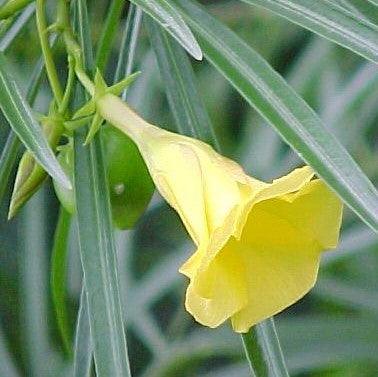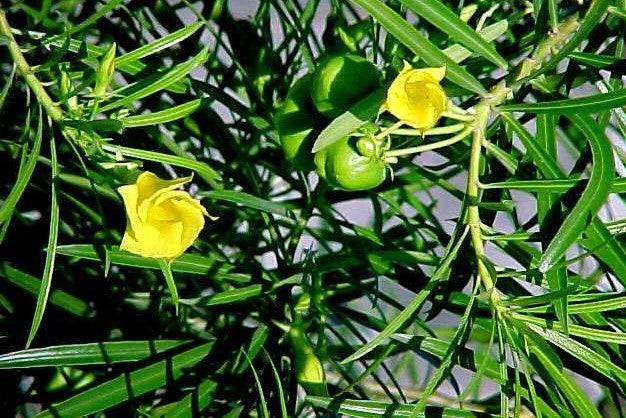-
Plant Description:
- Cascabela thevetia, also known as yellow oleander or lucky nut, is a species of flowering plant in the dogbane family. It is native to Mexico and Central America, but is now widely cultivated in tropical regions around the world. The plant produces clusters of bright yellow, trumpet-shaped flowers, and its leaves and seeds are toxic. The leaves, bark and seeds contain several cardiac glycosides including thevetin and its derivative, thevetin A. These are poisonous to humans and animals, causing symptoms such as vomiting, diarrhea, and irregular heartbeat if ingested. It is primarily used as ornamental plant and also have some traditional use in herbal medicine, but it's not recommended to consume or apply it without medical supervision.
-
Growing tips:
-
Cascabela thevetia is a tropical plant, so it prefers warm temperatures and high humidity. It will also tolerate a wide range of light conditions, from full sun to partial shade. However, it can be sensitive to frost, so it's important to provide protection from freezing temperatures.
The plant is relatively drought-tolerant and does not require frequent watering. However, it is important to keep the soil consistently moist, especially during hot or dry weather.
The plant can be fertilized with a balanced, water-soluble fertilizer during the growing season, typically spring and summer. You can use an organic or inorganic fertilizer with a ratio like (N-P-K) 10-10-10 or 20-20-20
Cascabela thevetia is considered a slow grower, and will not require much pruning. However, it's a good idea to remove dead or damaged branches as needed.
It's also worth noting that all parts of the plant are toxic, so be careful not to ingest any parts of it and keep it away from children and pets.
-
Benefits:
-
Cascabela thevetia has a long history of traditional use in herbal medicine. However, it's important to note that it is a toxic plant and should not be consumed or applied without medical supervision.
Some traditional uses of Cascabela thevetia include:
- The seeds have been traditionally used as a treatment for various ailments, including headaches, fever, and heart conditions.
- Extracts of the plant have been used as a treatment for heart disease and snakebites.
- The bark and leaves are used as a treatment for stomach problems and dysentery.
Also, it has been found that the plant contains several compounds such as alkaloids, cardiac glycosides, flavonoids, tannins and saponins that give it medicinal properties.
However, More research is needed to validate these uses and determine the appropriate doses and administration methods, as well as to understand the potential risks and side effects of using the plant. I strongly advise not to use this plant for medicinal purposes and always seek professional medical advice for any health concerns.




